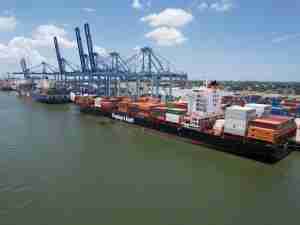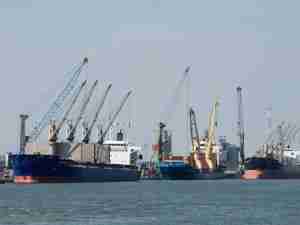“New business within our bulk division, our ability to diversify our cargo interests, and our continued cost containment measures have placed NC Ports in our strongest financial position since 2008,” said Jeff Strader, interim Executive Director, NC State Ports Authority. “We project this growth trend to continue into our next fiscal year as we pursue further opportunities to support North Carolina businesses and commodities.”
New and expanding business in the bulk commodities sector at both seaports has contributed largely to the NC Ports net gains. The exportation of North Carolina wood chips from both seaports has been a significant new business opportunity for NC Ports. The Port of Morehead City exported more than 208,000 tons of chips in FY 12 while the Port of Wilmington handled nearly 320,000 tons. Southern yellow pine grown in NC is a desirable material around the globe for the manufacture of medium density fiber board (MDF) and flooring products.
The Port of Wilmington also experienced growth in two other commodities central to NC’s agricultural community with the import of UAN, a liquid fertilizer solution, and the importation of grains used mainly as pork and poultry feed in North Carolina. Grain imports were up nine times year over year at more than 474,000 tons. UAN imports, a new commodity for the Port of Wilmington, increased five times over last year at over 244,000 tons.
Ro-ro (roll on/roll off) service continues to be a growth area for Wilmington as an additional carrier, Sallaum Lines, began calling earlier this year. Sallaum delivers NC-sourced vehicles and equipment to West Africa. The Port of Wilmington now serves more than 30 ro-ro vessels per year.
In addition to wood chips, the Port of Morehead City realized an increase of the movement of metal products such as rail and scrap metal. This coupled with the steady volume of imported raw rubber for the service of NC tire manufacturers contributed significantly to the diversification of goods moved through that facility. The import of metal products were up 9 percent, while raw rubber import volumes increased 6 percent year over year.
Following two years of unprecedented container movement growth, volumes decreased by about 5 percent year over year, while breakbulk volumes decreased at both facilities by a combined 7 percent.
NC Ports are focused on investing in its facilities for future growth. The Wilmington Harbor Navigation Improvement Study is one such project with an immediate need for current and future customers of the Port of Wilmington. The feasibility study will examine the potential for making improvements to three critical issues in the existing shipping channel to address needed navigational enhancements.
In addition, there are many statewide initiatives supporting further investment and development at port facilities. The recently completed NC Maritime Strategy Study will further define the current and future role the maritime industry plays in sustaining North Carolina’s efforts to create jobs and strengthen the economy across the State. The study will provide a framework for future port development and planning to address economic development and attracting industries.
“With NC recently being named the fourth best state for business by CNBC, our state will continue to grow and develop opportunities for NC businesses. North Carolina’s Ports are well positioned to meet the needs of our NC business community to reach the expanding global market,” said Strader.






_-_28de80_-_58820516bd428ab3fd376933932d068c43db9a4a_lqip.jpg)




